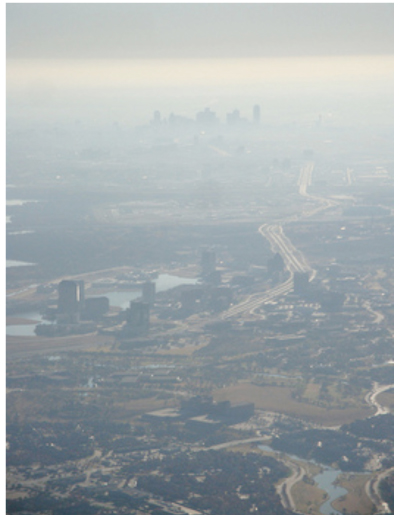Rejected Smog Standard Would Have Saved 4100 Lives Annually – including DFW Residents
 The EPA-proposed ozone/smog standard of 70 parts per billion the White House rejected at the last minute in 2011 would have saved almost twice as many lives per year over and above the Bush-era standard of 75 ppb that was eventually adopted, according to a new study by John Hopkins University scientists.
The EPA-proposed ozone/smog standard of 70 parts per billion the White House rejected at the last minute in 2011 would have saved almost twice as many lives per year over and above the Bush-era standard of 75 ppb that was eventually adopted, according to a new study by John Hopkins University scientists.
Most of those new leases on life would have come in large cities like New York, Chicago, and Los Angeles, where smog levels are historically high. But researcher say the standard would also have saved a significant number of DFW lives as well.
The lower standard was rejected by the Office of Management and Budget, and Executive Branch agency that has grown to have veto power over almost all EPA regulatory decisions based on their economic impact – a variable specifically excluded from consideration in the Clean Air Act.
The John Hopkins team also concluded that the lower 60 ppb standard that was in the lower range of what was recommended by EPA's own science advisory would have saved up to 8000 lives per year, compared with the 2500 annual lives estimated to be saved under the more lenient 75 ppb standard.
In addition to more lives saved, the study concluded that millions of asthma attacks and acute respiratory problems would be prevented with a lower ozone standard.
“We contend that a more stringent standard would prevent a substantial number of adverse health outcomes,” wrote the researchers, led by senior scientist Frank Curriero of the Johns Hopkins Bloomberg School of Public Health.
They calculated the reduced deaths by incorporating data from a variety of health studies around the country that have found that whenever ozone levels rise, deaths and hospitalizations from cardiovascular and respiratory problems rise, too.
There was also a warning that climate change would make higher ozone levels more likely, as seems to be in play this year with much of the country experiencing the kind of drought and heat Texas had last summer, and with national ozone level spiking.
EPA officials estimated that achieving the rejected 70 ppb standard would cost between $19 billion and $25 billion per year, including the estimated $8 billion for meeting the current standard set by the Bush administration in 2008. However, the agency estimated the health benefits would be worth $11 billion to $37 billion per year. Based on new evidence of medical costs associated with ozone pollution, that figure may have been very conservative.
The EPA's next review of the standard is supposed to begin in 2013. The Clean Air Act requires an evaluation every five years; Jackson, however, had planned to act early until Obama asked her to stop.
Meanwhile, DFW still can't meet the old 1997 85 ppb standard after three clean air plans in the last seven years. This year's fate is already sealed thanks to the June smog attack we had early on. Our worst monitors are averaging above 85 ppb and we haven't gotten to August – traditionally our worst month. Smog is taking its toll on our health in DFW, even if it doesn't make the nightly news.
